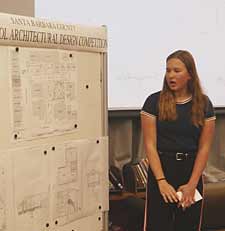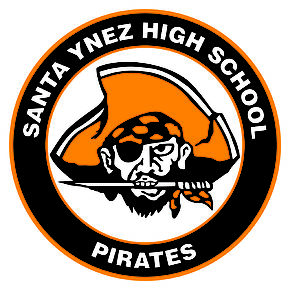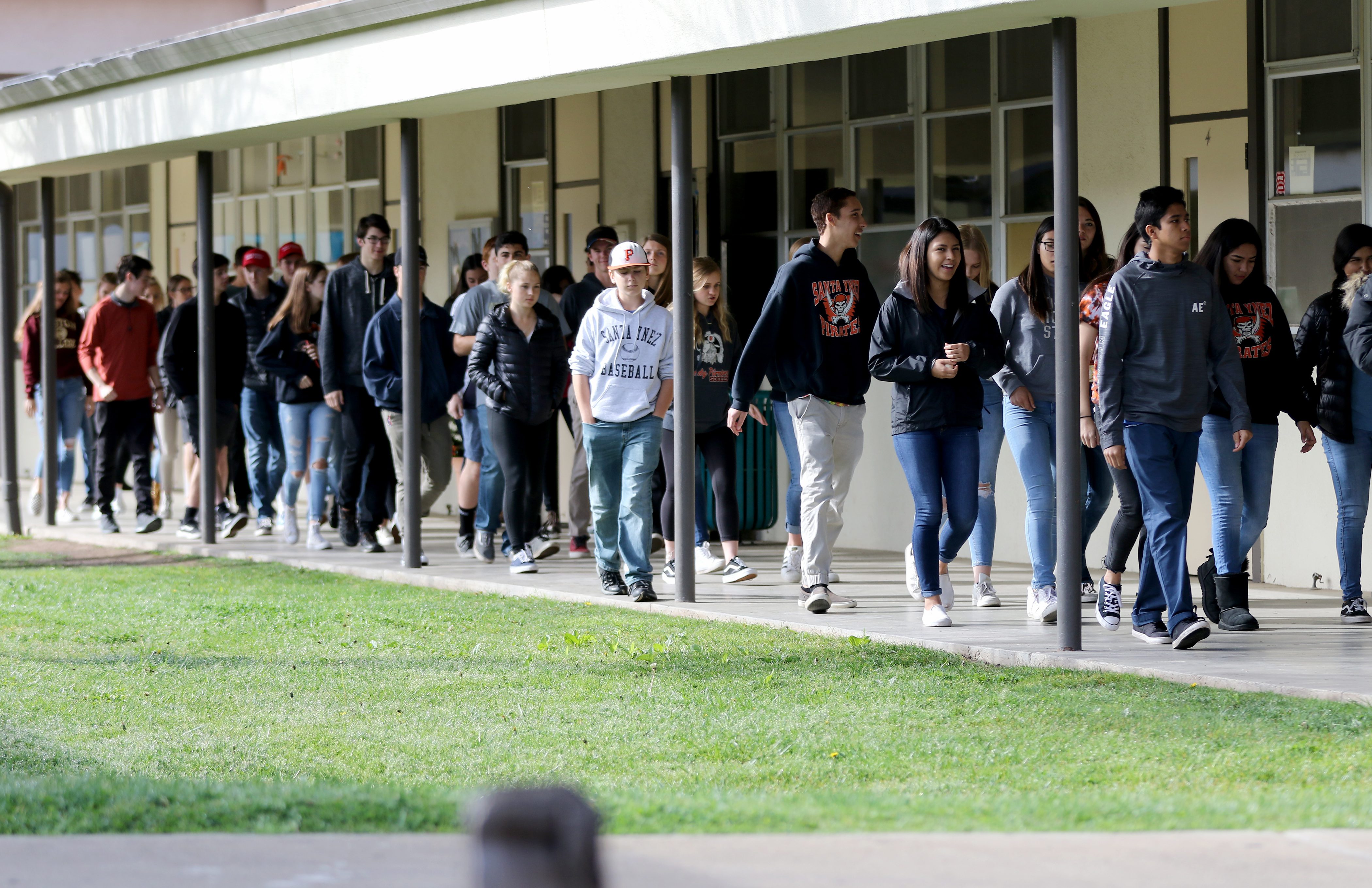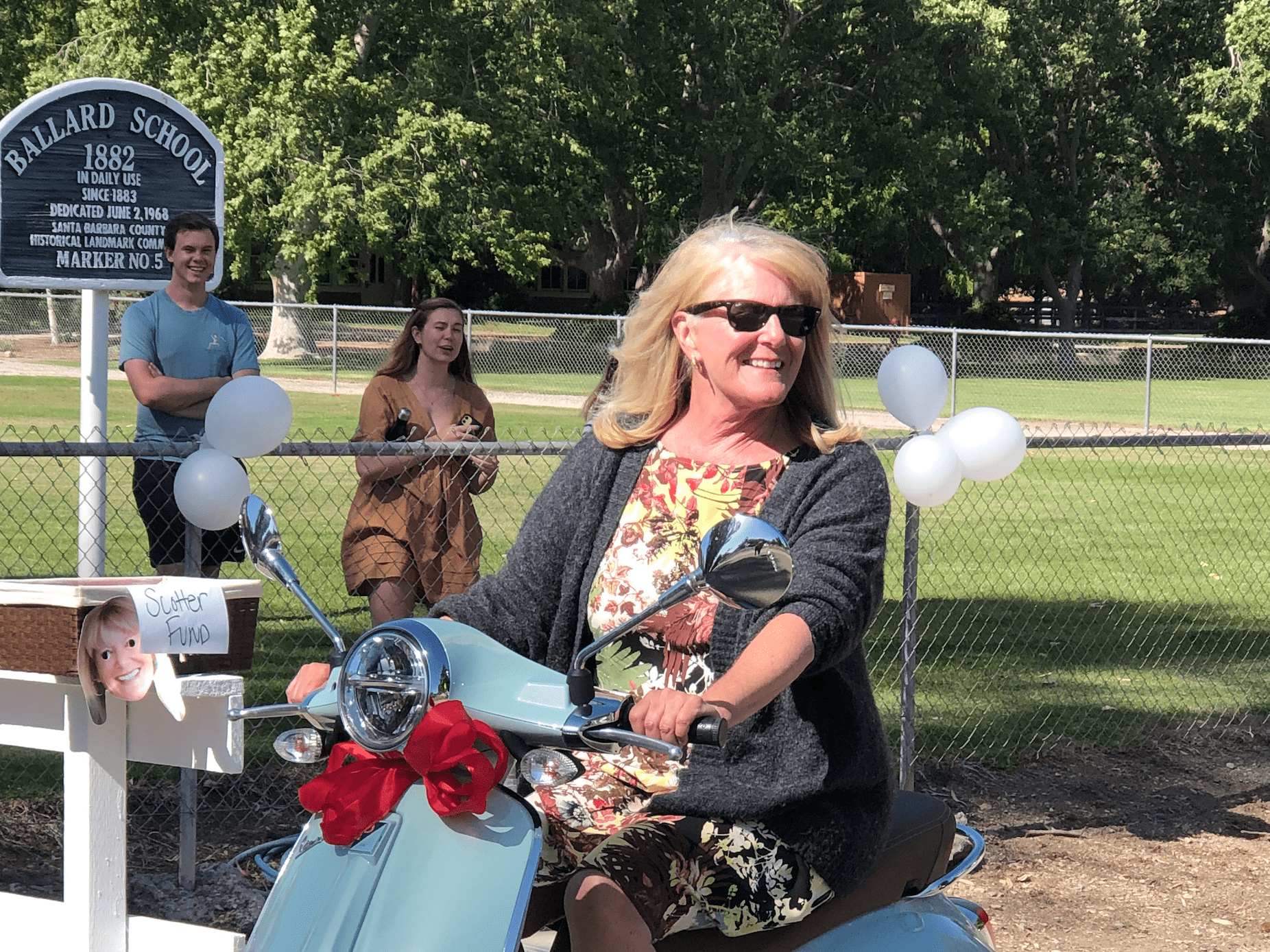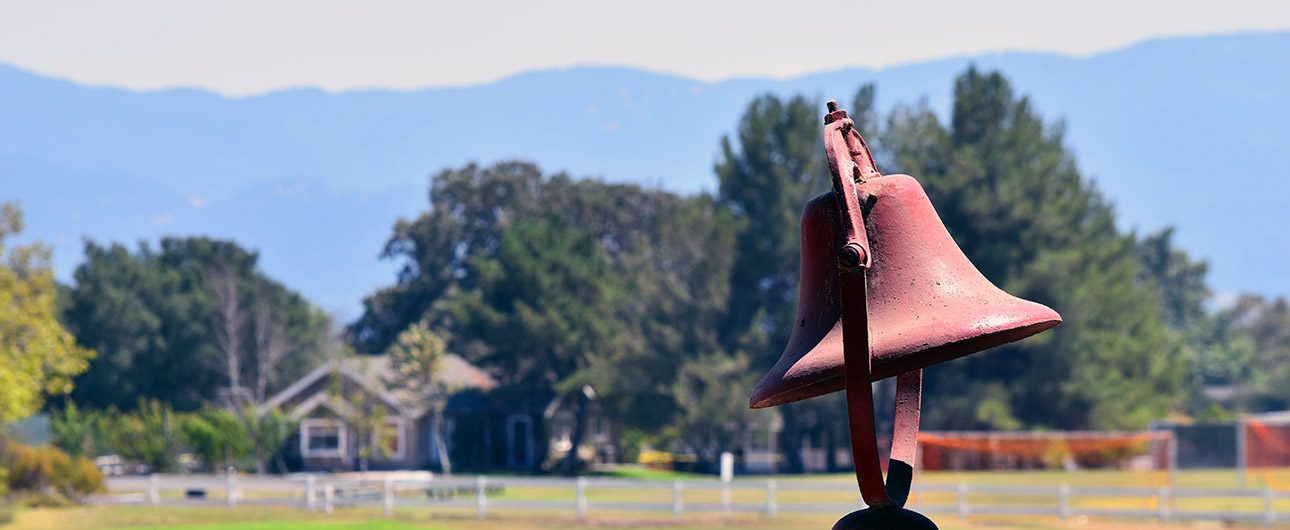Staff Report
Olivia Doman, a freshman at Santa Ynez Valley Union High School, was the surprise winner of the Architectural Foundation of Santa Barbara’s annual Santa Barbara County High School Architectural Design Competition.
Doman competed against six seniors, three juniors and two sophomores, the finalists who presented their work to a panel of four jurors March 16 at Dunn School.
“We haven’t had a ninth-grader win it for over seven years,” said David Goldstien, a retired architect and founder of the 28-year-old competition. “We gave them a really tough problem this year, and with so many seniors, we figured she didn’t have a chance.”
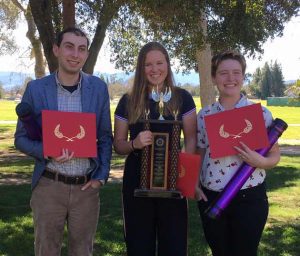
Winners of the county High School Architectural Design Competition, from left, are Sullivan Israel, third place; Olivia Doman, first place; and Theo Soderman, second place.
Doman’s name will be added to the legacy trophy that will reside in her school until next year’s contest.
This year’s competition was unusual, and not merely because a freshman took first place. For the first time, the preliminary competition on March 12 was held in two venues simultaneously: the Santa Ynez Valley Union High School gym, where Doman spent nearly seven hours drawing her solution, and at Direct Relief near the Santa Barbara Airport.
Each venue accommodated nearly 30 competitors from 10 high schools in the county. Their work was judged by two teams of three architects. Six finalists selected from each venue came together at the finals to make a 15-minute presentation standing beside their architectural drawings.
This year’s problem was another first. Inspired by a charrette organized by the Santa Barbara Chapter of the American Institute of Architects (AIA) in October 2017, which explored ways to revitalize Santa Barbara’s downtown, the challenge required competitors to tackle an entire city block instead of a discrete building.
“We wanted to make this an urban design problem,” said Jake Niksto of Becker Henson Niksto Architects in Santa Barbara, creator of the problem statement. “Each year we try to make the problem relevant.
“Last year, with all of the recent fires, we gave them a fire station to design, but this year we thought we could challenge them to think about the importance of the space between buildings, and we wanted to use Santa Barbara as a site for this because its paseo system was a key feature identified by the architecture community during the 2017 charrette.”
The problem asked Doman and her peers to redesign an existing city block near the Arlington Theater. It required a public transit hub and an inviting open space connecting the block to State Street while scaled to pedestrians rather than cars, and six new dwelling units.
Drawing entirely by hand, some using T-squares and triangles while others relying on their freehand skills, competitors were required to present their design at multiple scales, that of the city block down to the detail of bicycle storage and front doors.
“I included vertical bicycle racks because they take up less space,” said Sullivan Israel, third-place winner and a senior from Laguna Blanca High School in Santa Barbara. This was Israel’s fourth time as a finalist. He said he found this year’s problem particularly challenging.
“In past years, we just had to design one thing, but this year it felt like four different things,” Israel said.
The jury also considered the problem challenging.
“This is a sophisticated problem,” said Jermaine Washington, one of the judges, who is an architect and teaches design studio at Cal Poly San Luis Obispo. “The fact that they had less than seven hours to work on this is impressive.”
“This is a real-world problem, and it’s great to see these kids tackle it so well,” said Christopher Manson-Hing, architect and past president of the Santa Barbara Chapter of the AIA.
Other winners were Theo Soderman, a senior at Dos Pueblos High in Goleta who took second place; and two honorable mentions (both seniors), Gabe Farhadian of Providence High and Jessica Ji of Dunn School.
The competition was sponsored by the Santa Ynez Valley Rotary and Santa Barbara Rotary Club; Inklings in Solvang; and Tri-Co Reproduction in Santa Barbara, which donated printing services.

